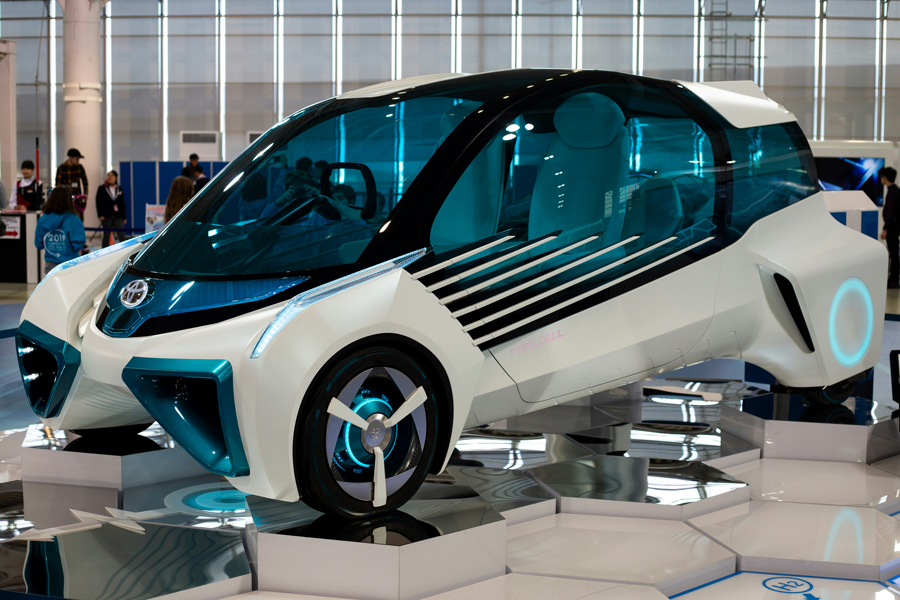Green hydrogen is one of the most eco-friendly forms of renewable energy creation. However, it still has a way to go before it becomes even close to market standard. Arguing its benefits for electric grid stability during modernization could be focal in transforming green hydrogen into a well-known and discussed contender for stabilizing eco-conscious energy to meet modern demands.
Energy Storage
Green hydrogen targets are pivotal for influencing energy storage integration and expansion. Systems may transfer excess renewable energy from generators like solar panels and hydropower into electrolyzers to produce green hydrogen. Tanks and underground reservoirs receive extra fuel for later dispersal.
Regulatory bodies acknowledge the potential behind hydrogen storage, which is why the Advanced Clean Energy Project received a loan from the Department of Energy for $504.4 million to build the largest storage facility in the world. It will bolster U.S. efforts catalyzed by the Bipartisan Infrastructure Bill.
Load Shifting
Other renewable energy sources become more reliable with hydrogen as a supplement and storage filled to the brim, which helps with load shifting. Having hydrogen at the ready in resilient banks alleviates grid pains when usage spikes by pulling from these reserves to keep services uninterrupted. Hydrogen has a longer storage time compared to other energies.
Load shifting is also critical during natural disasters, as an upgraded grid will seamlessly transfer required energy to in-need areas. Backups are essential for reframing the reputation of renewable energy into one that is more reliable and consistent, no matter how much electricity and energy citizens need.
For example, power-intensive structures like data centers emit a considerable percentage of worldwide greenhouse gases and demand a lot from the grid. They will have less of a negative grid and environmental impact with hydrogen-infused cooling systems, demonstrating how beneficial the relationship of hydrogen is to the grid and technologies connected to it.

Variability in Green Tech
Engineers cannot make the grid from homogenous technologies and materials. Otherwise, supply chains would cause disruptions and resource abuse may occur. Additionally, each device and structure connected to the grid has varied energetic requirements. Therefore, having less intensive devices to balance the load is essential.
Consumers see this as rising concerns over lithium-ion batteries permeating EV discourse, which also need a sturdy, powerful grid to deploy. Green hydrogen making and storage offers another solution in a portfolio of sustainable technologies to make a diverse yet compatible grid.
Grid Balancing
Utility providers are responsible for releasing an accurate amount of energy into the grid. With intermittent and novel renewable energies becoming increasingly associated with electric grid stability, providers will need time to hone in on consistently accurate amounts. Dispensing too much will make voltage exceed capabilities, causing damage to brand-new infrastructure.
Grid balancing is a strategy typically associated with increased carbon emissions by putting a coal or gas plant on full throttle. Instead of needing fossil fuel-based resources, green hydrogen electrolyzers could perform these tasks. Leveling the delivery and intensity of power throughout the grid could happen with zero greenhouse gas emissions, eliminating the normalcy of brown and blue hydrogen production.
Sector Coupling
Sector coupling is an ideal strategy paired with increased energy storage infrastructure. Extra renewable energy from wind, solar and others that would otherwise be lost may be transformed into usable green hydrogen. The production can go directly to public transportation or industrial heating and cooling.
The grid needs varied types of redirection to minimize the potential for overloading a growing system. Distributing resources more evenly makes equipment and machinery last longer while keeping energy demands met.
Decentralization of Power Generation
One of the boons of renewable energy is power decentralization. Anyone may become a renewable energy generator and the same will be true for green hydrogen in the future. Distributed production is necessary for scaling as old fossil fuel infrastructure undergoes renovations and companies break ground to build storage. Instead of waiting for these projects to come to fruition, communities can now lead the charge to energy independence.
Transmission infrastructure quickly wears down. The advent of microgrids and diverse energy providers prolongs its life and efficiency, eliminating waste and resources going into retrofits and overhauls – even commercial fleets could contribute as hydrogen propels sustainable transport.

Reducing Curtailment
Renewable energy generators and the grid are in constant communication. The grid informs power companies to decrease production if the grid cannot handle the influx, resulting in curtailment. Intentional minimization of productivity diminishes the value of production methods like green hydrogen because it could keep making fuel.
However, green hydrogen provides the assets to decrease the chances curtailment would occur and prevents grid saturation. If there is too much energy, integrated tech can convert it to hydrogen storage with a power-to-hydrogen-to-power (P2H2P) model instead of missing out on prime times to keep operations flowing.
Grid Resilience
Several green hydrogen benefits change how energy weaves through systems to make machinery, wiring and connected devices last longer. It is essential to keep the grid as pristine, maintained and protected as possible to obtain the resilience modern society needs.
Natural disasters may rise from nowhere, but green hydrogen within the grid can keep emergency services alight and ready to deploy regardless of the scenario. Communities vulnerable to severe hazards or underserved by unjust systems see increased electric grid stability when green hydrogen is a backbone.
Process Discovery
As engineers and urban planners meld green hydrogen equipment with grid infrastructure, workforces will realize the small details needing streamlining or improvement. How can energy transfer more efficiently for less money? How can staff expedite assembly with eco-friendly materials and tactics?
Forced incorporation of green hydrogen into the grid improves its stability by promoting research and development that could only happen with hands-on experience with this integration.
Meeting Green Hydrogen Targets with Electric Grid Stability
Electric grid stability will be a combination of renewable tactics. Reaching for lofty green hydrogen targets is the least nations can do when promoting the power behind sustainable power and grid upgrades. The benefits of creating a balanced and carbon-neutral system for longevity and resilience are unparalleled.
Emily Newton is the Editor-in-Chief of Revolutionized, an online magazine discussing the latest industry innovations and trends.






